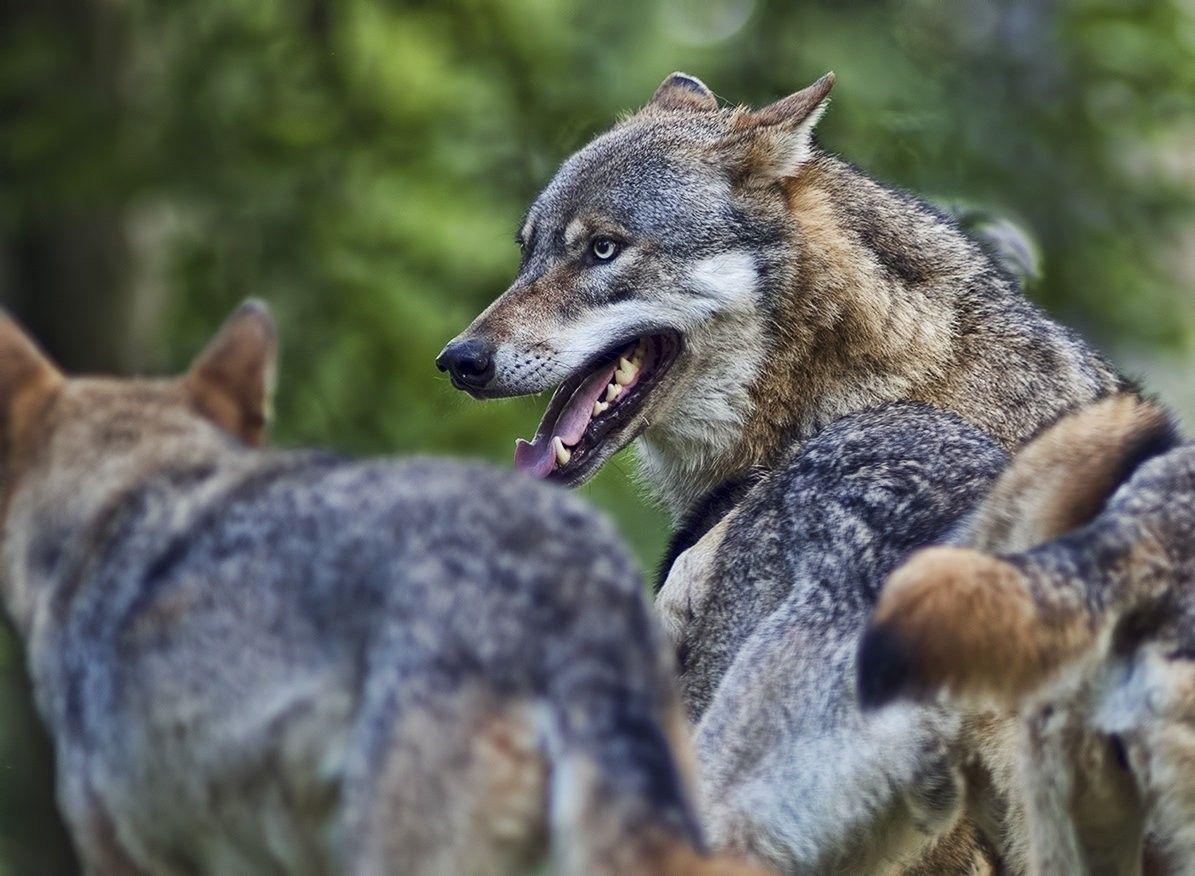
It is hard for a predator to single out one victim among many in a swarm of insects, a school of fish, or a flock of birds. Some prey congregate in groups for safety. Rabbits run in a zigzag pattern, fish dart away, and butterflies flit about, just out of reach. Many prey are agile and make evasive maneuvers when chased. Because predators can see the slightest movement, prey animals often freeze when they suspect a predator is near. They stay close to shelter and learn all the escape routes in their territory. Similarly, prey animals have different strategies for confounding their predators. River otters sometimes cooperate in herding fish into coves where they can pick them off more easily. Coyotes in a pack take turns leading the chase after a deer, or a pair may split up to cut a woodchuck off from its escape route. Cooperative hunting helps some predators capture prey. Its only chance is to get within striking distance before being spotted by the prey. A bobcat crouches low and inches forward, gradually closing in on a hare. Dragonflies dart about catching mosquitoes, and otters lunge after small fish, newts, and frogs. The tracks of a weasel in the snow show an animal that dashes every which way as it hunts for mice. Other predators hunt more actively, searching high and low until prey is spotted and then chasing it down. Rattlesnakes nose out rodent trails and curl up beside them to wait. Some use ambush, lying in wait near a known game path and then pouncing on the unsuspecting prey. Predators have a variety of different strategies for hunting. Prey animals tend to stay within a well-known home range, foraging in familiar places and staying close to shelter. They investigate every nook and cranny in search of prey. Predators tend to be inquisitive about their environment, restless and on the prowl. The behavior of predators and prey are largely instinctive, adaptations for their particular way of life, though learning and experience are often important, too. They need the tools and skills of a predator as well as those of prey. Smaller predators, like weasels and housecats, frogs and fish, insects and spiders, are also prey to larger animals, and they must hunt for food and be on the lookout for their predators as well, a double challenge. Hunters of all species learn the importance of approaching their prey from downwind, or their chances of getting close enough for a kill are slim.
:max_bytes(150000):strip_icc()/hawk-prey-58a6d41e5f9b58a3c90b5c96.jpg)
Having a keen nose is an important adaptation for detecting prey or the presence of predators. The sense of smell is highly developed in most mammals, although we humans depend more on sight. Without turning their heads, they can listen to sounds from every direction. Rabbits and deer have large ears that swivel around to pick up sounds. Foxes and bobcats have ears directed towards the front, an aid in pursuing prey. As with eye position, predator ears tend to point forward. Keen hearing is crucial for both predators and prey. To remember this difference, it’s helpful to learn the rhyme: “Eyes on the side, born to hide eyes on the front, born to hunt.” Owls, bobcats and weasels all have forward facing eyes, while deer, mice, and songbirds have eyes directed more toward the side. However, eyes in this position help the animal see to the front, side, and, in some cases, even behind without turning their heads. This gives them a larger field of vision, though they cannot pinpoint an object in front of them as well.

Prey species tend to have eyes placed more to the side of the head. Forward-facing eyes give good depth perception because their fields of view overlap, thus providing binocular vision. Predators tend to have eyes facing to the front, for locating and following prey as it tries to evade capture. The anatomy and the behavior of predator and prey animals reflect each species’ needs and way of life.īoth predators and prey need keen senses, but the position of eyes and ears, the functioning of noses and sense of smell, can be very different. Prey animals must forage for food cautiously, always on the lookout for predators. Predators must find their prey, chase and catch it, subdue it if it fights back, all before they eat it. What makes the fox clever and the deer swift, and why do both have a keen sense of smell? Predators and prey face different challenges in getting their food.


 0 kommentar(er)
0 kommentar(er)
